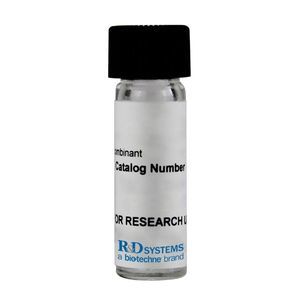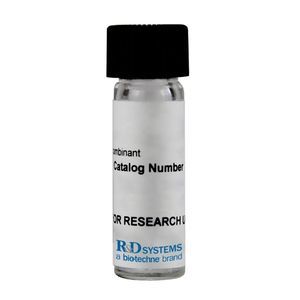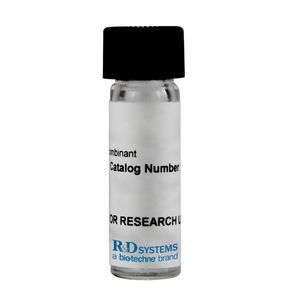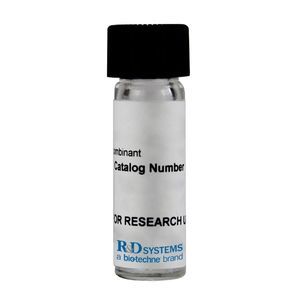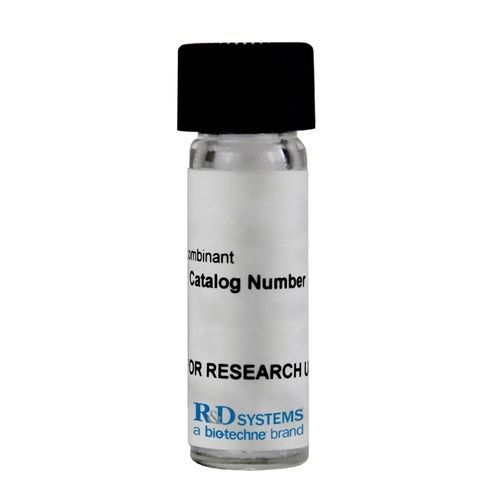
Activin A reagent 11348-AC seriesfor researchtissueprotein
Add to favorites
Compare this product
Characteristics
- Type
- activin A
- Applications
- for research, tissue
- Tested parameter
- protein, hemoglobin
- Storage temperature
Min.: -70 °C
(-94 °F)Max.: 8 °C
(46 °F)- Purity
95 %
Description
Endotoxin Level - <0.01 EU per 1 μg of the protein by the LAL method.
Activity - Measured by its ability to induce hemoglobin expression in K562 human chronic myelogenous leukemia cells. Schwall, R.H. et al. (1991) Method Enzymol. 198:340. The ED50 for this effect is 0.200‑1.20 ng/mL.
Source - Chinese Hamster Ovary cell line, CHO-derived Activin A protein
N-terminal Sequence
Analysis - Gly311
Structure / Form - Disulfide-linked homodimer
Predicted Molecular Mass - 13 kDa (monomer)
SDS-PAGE - 14 kDa, reducing conditions
24 kDa, non-reducing conditions
Activin and Inhibin are members of the TGF-beta superfamily of cytokines and are involved in a wide range of biological processes including tissue morphogenesis and repair, fibrosis, inflammation, neural development, hematopoiesis, reproductive system function, and carcinogenesis (1‑7). Activin and Inhibin are produced as precursor proteins. Their amino terminal propeptides are proteolytically cleaved and facilitate formation of disulfide-linked dimers of the bioactive proteins (8, 9). Activins are nonglycosylated homodimers or heterodimers of various beta subunits ( beta A, beta B, beta C, and beta E in mammals), while Inhibins are heterodimers of a unique alpha subunit and one of the beta subunits. Activin A is a widely expressed homodimer of two beta A chains. The beta A subunit can also heterodimerize with a beta B or beta C subunit to form Activin AB and Activin AC, respectively (10). The 14 kDa mature human beta A chain shares 100% amino acid sequence identity with bovine, feline, mouse, porcine, and rat beta A.
Catalogs
No catalogs are available for this product.
See all of R&D Systems‘s catalogsRelated Searches
- Assay kit
- Solution reagent kit
- Blood assay kit
- Serum assay kit
- Immunoassay assay kit
- Plasma assay kit
- Research reagent kit
- Protein reagent kit
- Diagnostic reagent kit
- Enzyme reagent kit
- Histology reagent kit
- Reagent medium reagent kit
- Immunology reagent
- Cytology reagent kit
- Antibody
- Buffer solution reagent kit
- ELISA assay kit
- Research assay kit
- Clinical reagent kit
- Virus reagent kit
*Prices are pre-tax. They exclude delivery charges and customs duties and do not include additional charges for installation or activation options. Prices are indicative only and may vary by country, with changes to the cost of raw materials and exchange rates.


